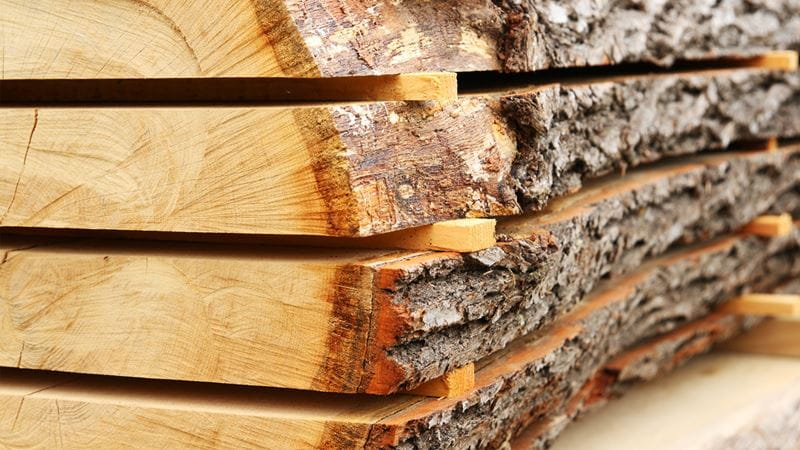
Every day, the world’s urban population swells by 200,000. At that rate, more than two thirds of us will be living in cities by 2050 compared with just over half today.1
That will require a significant expansion of the built environment.
It could also mean a significant enlargement of humankind's carbon footprint. Cities already account for around three quarters of global carbon emissions and energy use.2 This means using traditional construction techniques and planning methods would likely derail efforts to halt climate change.
But it need not be this way.
Architects, urban planners, green building start-ups, material scientists and investors attending sessions at The Klosters Forum (TKF), a non-profit organisation, showcased the ways in which the looming urban expansion could yet be sustainable.1
Not all the solutions discussed at the annual TKF meeting were technologically advanced. The most effective, attendees argued, literally grows on trees.
Timber has strong credentials as a sustainable building material. Historically, timber has been used in building construction for centuries across Asia, Europe and Americas thanks to its durability.
In recent decades however, the material’s share in building has shrunk as concrete and steel, which are considered more durable, rot resistant and easy to mass produce, became more popular.
Wood for good
In a workshop entitled “how to scale timber buildings that regenerate sustainable forestry and local economies,” TKF participants explained why timber should be re-adopted en masse by the construction industry as a way of halting global warming and environmental degradation.
Timber provides an attractive cost-effective means to reduce net carbon emissions, especially the embodied carbon that the building sector badly needs to cut.
What’s more, it also acts as carbon sink, can restore biodiversity and improve soil quality.
There’s no shortage of data attesting to timber’s environmental credentials as a building material.
For example, research shows a young willow tree building up a dry biomass of 75kg in the first five years of growth captures 140kg of CO2,3 which compensates the emission from a typical household’s electricity use for 10 days.4
Wood sequesters carbon even after it is logged. Every cubic metre of wood used as a substitute for steel or aluminium reduces carbon emissions to the atmosphere by an average of 0.9 tonnes.5

Busting the myths
The key challenge, forum participants agreed, lay in developing strategies that could incentivise the construction of timber-based buildings and regenerate sustainable forestry and local economies.
One obstacle is the notion that timber is not fit for use in tall buildings. Thanks to new innovations, that is no longer the case. Among the pioneering engineered wood products is cross-laminated timber (CLT) – a building panel made of sawn, glued and layered wood which allows architects to build wooden skyscrapers.
Mjøstårnet, currently the world’s tallest timber building in Norway, which rises to more than 85-metre high, uses CLT while a 100-metre-tall timber residential block is currently planned in Switzerland for completion in 2026.
The market for CLT is expected to grow to a USD2.5 billion globally by 2027 from the current USD1.1 billion, an annual increase of some 15 per cent.6
Another misconception is that timber-based buildings pose a fire hazard. However, wood is actually inherently fire resistant – when the external layers of a timber beam char, they protect the core from damage for longer periods.
What is more, new technologies such as CLT can produce a stronger and fire-resistant weave which can outperform unprotected steel structures in fire safety.
Built by Nature, an Amsterdam-based organisation dedicated to showcasing ground-breaking projects, has been making multi-million euro grants to foster mass timber construction in cities.
“There are a lot of myths about mass timber – whether it’s inflammable or contributes to deforestation for example. There are a lot of research that speak the contrary and it’s important to distribute them and dispel these myths,” its CEO Amanda Sturgeon, a TKF participant, said.
Another hindrance to timber use is the lack of technical knowledge in the public sector and municipal authorities.
To overcome this challenge, TKF forum participants said, the industry should train sustainability facilitators to engage with this tough group of stakeholders.
Changes to regulation and tax schemes could also reward environmental performance of buildings to induce system-wide change.
Encouragingly, some European governments have committed to making greater use of timber and other sustainable materials to meet national or municipal net zero targets.
The city of Amsterdam, for example, is mandating that 20 per cent of all new construction projects to use wood or other biobased materials from 2025. The French government, meanwhile, has introduced rules stipulating that 50 per cent of construction materials used in any new buildings must be either timber or sustainable alternative.
Typically, timber accounts for just 20 per cent of the construction materials used in European buildings (for commercial real estate, the figure is just 5 per cent on average).7
-
About The Klosters Forum (TKF)
The Klosters Forum is a not-for-profit organisation, offering a neutral platform for disruptive and inspirational minds to tackle some of the world’s most pressing environmental challenges. Its mission is to accelerate positive environmental change by developing and nurturing a growing community of leading thinkers and doers and by fostering cross-disciplinary exchange and collaborations.
Every year, the Forum hosts an environmental annual event connecting high-profile participants from the fields of science, business, politics and industry, as well as NGOs, creative minds and sustainability experts in a neutral and discreet environment.
Click here to find out more.
Pictet’s partnership with The Klosters Forum
Pictet Asset Management is pleased to partner with The Klosters Forum to draw attention to the impact the global food system has on biodiversity and society at large.
Investment Insights
-
- Technologies to turn timber into a strong and versatile material are developing fast. Among the pioneering engineered wood products is cross-laminated timber (CLT) – a building panel made of sawn, glued and layered wood which allows architects to build wooden skyscrapers. The market for CLT is expected to grow to a USD2.5 billion globally by 2027 from the current USD1.1 billion, an annual increase of some 15 per cent.
-
- Timber is growing its footprint in industrial and chemical applications. Companies are developing technologies to turn wood into new bio-based materials and chemicals, such as bio-monoethylene glycol (BioMEG), lignin-based renewable functional fillers as well as industrial sugars.
-
- What is more, investors in timber can benefit from the potential for inflation protection. Companies in this asset class have historically been able to raise prices faster than their costs.




